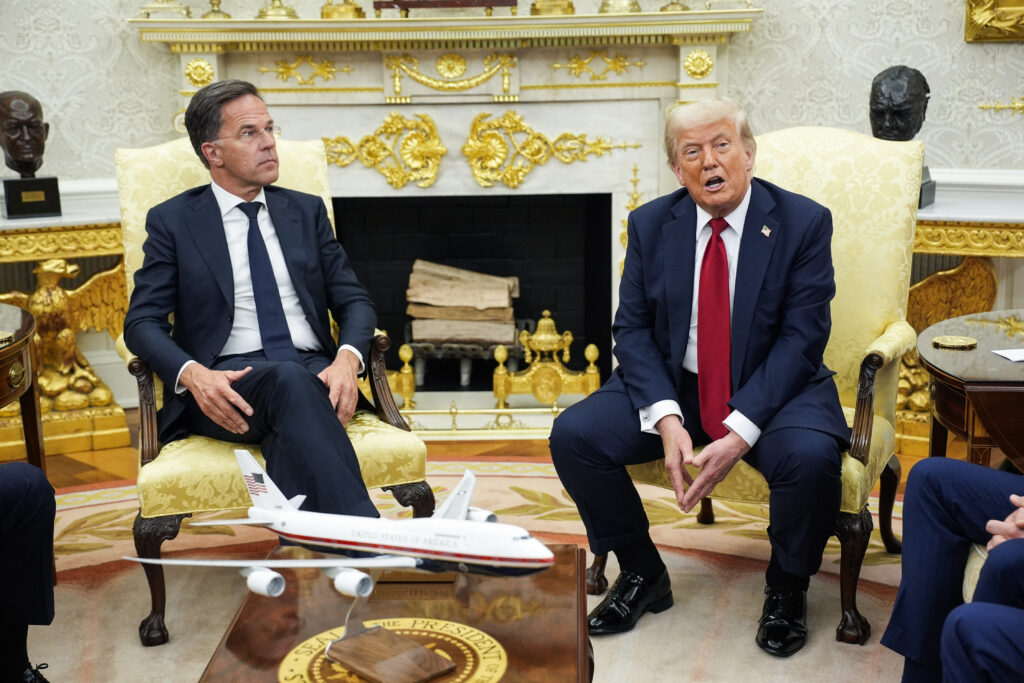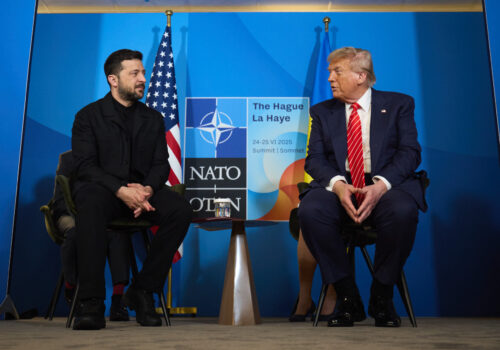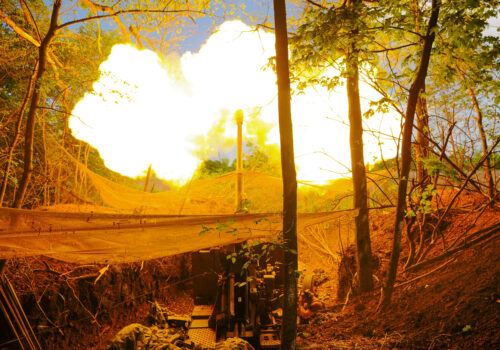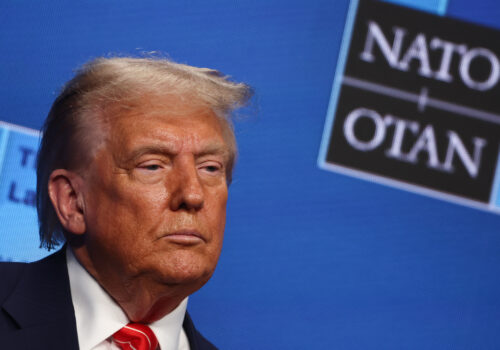JUST IN
The tariff war is coming to Russia. US President Donald Trump threatened today to levy massive “secondary tariffs” on Russian goods if Russian President Vladimir Putin does not commit to a deal to end his war on Ukraine within fifty days. During a White House visit by NATO Secretary General Mark Rutte, Trump also announced a plan for European NATO nations to buy billions of dollars’ worth of US weapons to send to Ukraine. Will this rapid shift in Trump’s approach to the conflict bring peace to Ukraine? And what impact might these new weapons or tariffs have on the war? Our experts share their insights below.
TODAY’S EXPERT REACTION BROUGHT TO YOU BY
- John E. Herbst (@JohnEdHerbst): Senior director of the Council’s Eurasia Center and former US ambassador to Ukraine
- Daniel Fried (@AmbDanFried): Weiser Family distinguished fellow and former US assistant secretary of state for Europe
- Torrey Taussig (@torrey_taussig): Director and senior fellow at the Transatlantic Security Initiative in the Scowcroft Center for Strategy and Security, and former director for European affairs on the National Security Council
- Tressa Guenov: Director for programs and operations and senior fellow at the Scowcroft Center for Strategy and Security, and former US principal deputy assistant secretary of defense for international security affairs
What this means for the war
- Trump’s announcement today “confirms his turn toward a policy of putting pressure on the Kremlin” to secure peace for Ukraine, John says. He notes that this turn started to become apparent at last month’s NATO Summit in The Hague, accelerating when Trump ended the pause on military aid for Ukraine last week.
- What explains Trump’s shift? Dan credits a combination of European leaders, especially Rutte, “working hard to develop relations and common ground with Trump,” as well as “Putin’s dissembling and manipulation” in peace talks so far. “Six months into the second Trump administration,” Dan tells us, “the United States and Europe finally seem on the same page with respect to helping Ukraine resist Russian aggression.”
- European allies have been crafting this approach since Trump’s 2024 election, Torrey says, “knowing that a second Trump administration was unlikely to advance new and significant weapons donations to Ukraine.”
- But today’s announcements, says John, “need to be the start of a sustained effort” if they are to achieve Trump’s goal of “a stable peace between Russia and an economically viable, secure Ukraine.”
Sign up to receive rapid insight in your inbox from Atlantic Council experts on global events as they unfold.
Weapons for Ukraine
- Much will depend on how fast the new weapons reach Ukraine, says Torrey. “Should the Patriot systems be shipped to Ukraine immediately, as Trump has indicated, they will have a more decisive effect on the battlefield.”
- But Tressa notes that Trump’s pledge is light on details. “Unless there is considerable new production capacity,” she says, “it will likely take years for brand new Patriots and other highly advanced weapons systems to come off the line.”
- Adding to these potential hurdles, says Tressa, is the “notoriously slow” US foreign military sales system and the fact that Patriot interceptors are exceptionally rare—and many were just used up in the Israel-Iran conflict.
- Immediate sources of Patriots, Tressa points out, “would have to come from the US military services,” which the Trump administration seeks to avoid, “or by reprioritizing existing orders from other countries, which could have serious operational and diplomatic tradeoffs for other priority regions.”
Tariff threats against Russia
- The proposal for tariffs against Russia’s trading partners “doesn’t seem quite ready,” says Dan, adding that while the proposed 100 percent secondary tariffs “could be a usable club to pressure the Russian economy, we won’t know until the details emerge.”
- Dan tells us that the bill by Sens. Lindsey Graham and Richard Blumenthal, which would impose up to 500 percent tariffs on countries buying Russian oil, is aimed at “the right target, but it’s not an optimal formula hitting it.” Levying such duties on Russian oil purchasers China and India “might work poorly” given that the United States in in the midst of trade negotiations with those countries.
- Senate Majority Leader John Thune said this afternoon that in light of Trump’s statement, the Senate would hold off on advancing the Graham-Blumenthal bill, a move Torrey deems “unfortunate.” She asks: “Why would Putin change his tack in the next fifty days when he has chosen to stay the course for the last three years, let alone the first six months of the Trump administration?”
- “Notwithstanding the questions” that remain surrounding the potential tariffs, says Dan, today’s announcement marks “a big improvement over the US abandonment of Ukraine that many feared just weeks ago.”
Further reading
Tue, Jul 8, 2025
Cautious optimism in Ukraine as Trump vows to send more weapons
UkraineAlert By Peter Dickinson
Ukrainians have welcomed US President Donald Trump’s July 7 announcement that he intends to provide Ukraine with more weapons, but many remain deeply cynical over the longer term prospects for continued US support, writes Peter Dickinson.
Mon, Jul 7, 2025
Why the Pentagon’s ‘pause’ on weapons to Ukraine backfired
New Atlanticist By John E. Herbst
The efforts by the “restrainers” in the administration to pause arms to Ukraine failed. But they are still in the game.
Wed, Jun 25, 2025
Trump warmed to NATO at The Hague. But what about Ukraine?
Fast Thinking By
Allies reiterated their commitment to collective defense. But absent from the communiqué was any mention of how Russia’s war against Ukraine should end.
Image: NATO Secretary General Mark Rutte and US President Donald Trump speak during a meeting in the Oval Office of the White House in Washington on July 14, 2025. Photo by Yuri Gripas/Abacapress.com via Reuters Connect.




